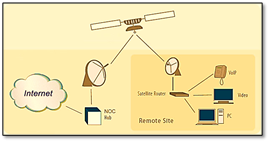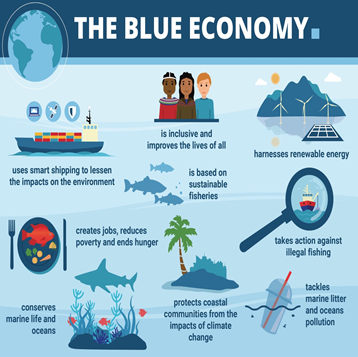Friday, 30th April 2021
China pushes defence ties with Bangladesh, Sri Lanka
In News
China’s Minister of Defence visiting Bangladesh and Sri Lanka this week, has called on countries in the neighbourhood to resist powers from outside the region in setting up military alliances in South Asia.
Significance of the visit
- Strengthening relations with Bangladesh and Sri Lanka: Both Bangladesh and Sri Lanka are important partners for China’s projects like the Belt and Road Initiative as well as for other Chinese infrastructure investments in South Aasia. The visit is intended to further consolidate the relations of China with the two countries.
- Visit following Quad Summit: The emphasis by the Chinese Foreign Minister on preventing outside military alliances in South Asia comes in the aftermath of the first Quad summit.
- Mounting resistance to Chinese involvement in Sri Lanka: The visit of the Chinese Minister coincides with mounting resistance in Sri Lanka to a Bill envisioning laws to govern the China backed $1.4 billion Colombo Port City.
- Emphasis on military cooperation: The defence minister mentioned during his visit that there is a need to increase high level visits, deepen cooperation in equipment technology and broaden exchanges in specialized fields and forge closer military relations.
Chinese Engagement in Bangladesh and Sri Lanka
- Defence Cooperation with Bangladesh: China and Bangladesh pledged to deepen defense cooperation, especially in the areas of defense industry and trade, training, equipment and technology, and the UN peacekeeping operations. China is also the largest arms supplier of the Bangladeshi military.
- Infrastructure development in Bangladesh: China is financing other mega projects in Bangladesh such as the Padma railway link, Dasherkandi water treatment plant, development of national ICT infra-network for Bangladesh and construction of a tunnel under the river Karnaphuli.
- Covid related assistance: China is having multilateral dialogue with South Asain countries on coordinating their Covid-19 responses and economic recoveries. Bangladesh has also recently approved China’s Sinopharm coronavirus vaccine.
- Infrastructure development in Sri Lanka: China is involved in a number of projects in Sri Lanka including adding highways, bridges, ports and airports. China is also reclaiming land through its Port City development project in Colombo.
Sources
https://www.thetimesofmint.in/world/china-pushes-defence-ties-with-bangladesh-sri-lanka/
EU Parliament approves post-Brexit trade treaty
In News
European lawmakers have approved the final ratification of the post-Brexit trade deal between the European Union and the United Kingdom, nearly five years after Britain decided to leave the bloc.
|
Brexit Brexit was the withdrawal of the United Kingdom (UK) from the European Union (EU) and the European Atomic Energy Community (EAEC or Euratom) in January 2020. The UK is the only country to formally leave the EU, after 47 years of having been a member state of the EU and its predecessor, the European Communities (EC), since 1973. It continued to participate in the European Union Customs Union and European Single Market during a transition period that ended in December 2020. |
EU-UK Trade and Cooperation Agreement
- Preferential arrangements: in areas such as digital trade, intellectual property, public procurement, aviation and road transport, law enforcement and judicial cooperation in criminal matters. It is underpinned by provisions ensuring a level playing field and respect for fundamental rights.
- Agreement on Governance: In order to ensure legal certainty to businesses, consumers and citizens, a dedicated chapter on governance provides clarity on how the Trade and Cooperation Agreement will be operated and controlled. It also establishes a Joint Partnership Council, who will make sure the Agreement is properly applied and interpreted, and in which all arising issues will be discussed.
- Fishing Rights: The agreement gives free access to EU fleets to fish in UK waters, including up to six miles off the shoreline for a five-year transition period. At the end of the transition, everything will return to normal arrangements and the UK will have full control over its waters.
Significance of the Trade Cooperation Agreement
- Continued trade: The agreement will ensure Britain and the EU can continue to trade in goods without tariffs or quotas after Brexit.
- Balancing expectations of Britain and EU: The agreement helps in reconciling Britain’s desire for independence with the EU’s aim of preserving its unity.
- Prevented Britain from becoming a low-regulation rival: The EU has had apprehensions that Britain would undercut the bloc’s social, environmental and state aid rules after Brexit. This would allow Britain to become a low-regulation rival to the EU, providing a competitive edge to businesses. A compromise has been reached in ensuring a level playing field that prevents businesses in one country gaining a competitive advantage over those operating in other countries.
Unresolved issues
- Financial Services: Financial Service providers have declared that the proposed system in the trade agreement is more piecemeal than existing arrangement and is less stable.
- Migration and free movement: EU and British expatriates will no longer have the freedom of movement. As a result of the deal, the British nationals will no longer be able to go to any EU member state and seek work on the same basis as the country’s own citizens.
- Security: The UK will be outside of the European Court of Justice’s jurisdiction. Continuing cooperation in the fight against terrorism and organised crimes may become complicated going ahead.
Sources
https://www.outlookindia.com/newsscroll/eu-lawmakers-approve-postbrexit-trade-treaty/2072743
https://www.ft.com/content/8e6db389-9e09-4c00-9b49-687a2dafd2ca
https://www.bbc.com/news/51180282
SEBI issues guidelines to strengthen provisional rating policies
In News
Markets regulator SEBI has declared new framework to strengthen policies on provisional rating by credit rating agencies (CRAs) for debt instruments.
About the News
- Background: The SEBI move comes after one of the bidders for stressed home financier DHFL, had mentioned in its resolution plan that it would have received AAA ratings from credit rating agencies, had it won the bid.
- While the Credit Rating Agency(CRA) Regulations prohibit advanced / indicative ratings, the credit of Rating Agencies are being used by competitive bidders under IBC Resolution process or debt-issuers in the guise of Credit Opinion discussions, Credit scenario analysis, indicative rating discussions and other make-believe documents.
- So, the markets regulator SEBI came out with a new framework to strengthen policies on provisional rating by CRAs for debt instruments.
What is the new framework?
- Under the framework, all provisional ratings ('long term' or 'short term') for debt instruments need to be prefixed as 'provisional' before the rating symbol in all communications-- rating letter, press release and rating rationale.
- In no case shall a rating, including provisional rating, be assigned by a credit rating agency for an issuer or client evaluating strategic decisions, such as funding mix for a project, acquisition, debt restructuring, scenario-analysis in loan refinancing.
- Provisional rating will be converted into a final rating within 90 days from the date of issuance of the debt instrument. The final rating assigned after the end of 90 days will be consistent with the available documents.
- An extension of 90 days may be granted on a case-to-case basis by the CRA’s rating committee in line with its policy.
Global Forest Goals Report 2021
In News
The Global Forest Goals Report 2021 was recently released by the UN Department of Economic and Social Affairs (UN DESA).
About the Report
It is the first evaluation of where the world stands in implementing the United Nations Strategic Plan for Forests 2030, providing a snapshot of actions being taken for forests, while stressing that it is necessary to meet the 2030 deadline in the plan.
|
Goals |
Progress so far |
|
Reverse the loss of forest cover worldwide through sustainable forest management, including protection, restoration, afforestation and reforestation. |
· The rate of net forest loss decreased substantially over the period 1990–2020 due to a reduction in deforestation in some countries, plus increases in forest area in others through afforestation and the natural expansion of forests · In 2020, global carbon stock stayed at 662 Gt. |
|
Enhance forest-based economic, social and environmental benefits, including the livelihoods of forest-dependent people. |
· With climate-related warming and severe droughts and storms, countries are expanding climate-resilient agroforestry in developing countries. Agroforestry is practiced on 43% of the world’s agricultural lands. · Many countries took steps to reduce poverty through community-based forestry. |
|
Increase significantly the area of protected forests worldwide and other areas of sustainably managed forests |
· In 2020, nearly 18% of the world’s forests stood in legally established protected areas, compared to just over 14% in 2000. · 54% of the world’s forests were under long-term management plans. |
|
Mobilize significantly increased, new and additional financial resources from all sources for the implementation of sustainable forest management and strengthen scientific and technical cooperation and partnerships. |
· Countries marshalled financial resources for sustainable forest management, mobilized more public funds from national and international sources than from private sources. · Despite these positive signs and outcomes, financing for forests remained well below what was needed to achieve the Global Forest Goals, especially in developing countries |
|
Promote governance frameworks to implement sustainable forest management, including through the United Nations forest instrument, and enhance the contribution of forests to the 2030 Agenda for Sustainable Development. |
· Some 142 countries, representing 95% of the world’s global forest area, reported they had platforms in place to enable stakeholder participation in forest policy development. · Towards the enforcement of laws and policies that protect forests, countries have traceability systems at the national level. |
|
Enhance cooperation, coordination, coherence and synergies on forest related issues at all levels |
· The UN System put in place a wide range of general coordination measures that had bearing on its forest-related programmes. However, no assessment or data existed to determine whether or not these systems improved the coherence of UN system forest-related programmes. |
India and Global Forest Goals
- India’s Voluntary National Contributions (VNC) under the Global Forest Goals:
- India announced addition of 2 lakh hectares of forest and tree cover per year as part of contributing towards Global Forest Goal number 1.
- India has made national commitments for NDCs regarding creation of additional carbon sink of 2.5 to 3 billion tonnes of CO2 equivalent, which will contribute to Global Forest Goal number 1.
- India has reaffirmed Bonn Challenge pledge for restoring 26 million hectares of degraded land by 2030 at UNFF too, towards the land degradation neutrality and thereby contribution to attainment of Global Forest Goal number 1 and 6.
- Forest Governance in India: The Indian Forest Policy of 1952 provided a formal recognition to the protective role of forests and established a national target of 33 percent for forest cover.
- Forest (Conservation) Act 1980 (amended in 1988 and 2003) and Wildlife (Protection) Act 1972 were enacted to control further deforestation of forest areas in India.
- The National Forestry Action Programme in 1999, with the key aim of raising forest cover.
- The Scheduled Tribes and Other Traditional Forest Dwellers (Recognition of Forest Rights) Act, 2006 recognises the traditional rights of communities over forest land and addresses issues concerning the transfer of forest lands.
Why do we need to save the forests?
- Carbon Sink: Every year, we lose 10 million hectares of the world’s forests, which ultimately is loss of carbon sink as forest ecosystems are the largest terrestrial Carbon Sink absorbing roughly absorbing roughly 2 billion tonnes of CO2 each year.
- Forest-based economic, social and environmental Needs: 40% of the extreme poor in rural areas, live in forest and savannah areas. The livelihoods of 1.2 billion people practicing agroforestry depends on forests and trees. Globally, 76 million tonnes of food comes from forests, 95% of which is plant-based.
- Natural resources and Habitat: Globally, around 1 million animal and plant species are under threat of extinction. 75% of the world’s accessible freshwater comes from forested watersheds. Forests help maintain genetic pool, hydrological cycle, soil fertility and combating desertification.
- Source of Energy: 1/3 of the world’s population, about 2.4 billion people, use wood fuel for cooking, boiling water and heating. 40% of the world’s renewable energy comes from forests - as much as solar, hydroelectric and wind power combined.
- Tracking Disease and Source of Medicine: 75% of emerging infectious diseases are zoonotic, and usually occur when natural landscapes like forests are cleared. Plant based medicines account for 25% of medicinal drugs in developed countries and up to 80% of medicinal drugs in in developing countries.
Challenges in achieving the targets under the Global Forest Goals
- Lack of standardized and comparable data: When it comes to tracking progress towards the Global Forest Goals, a lack of standardized and comparable data and statistics remains a challenge for some targets. For instance, while many countries recognize forest degradation as a major issue, there is no agreed-upon standard definition of what constitutes forest degradation.
- Measuring resilience and adaptive capacity: Similarly, while the resilience and adaptive capacity of forest ecosystems is a desirable characteristic, especially in the context of climate change, biodiversity protection, and for preventing future pandemics, there is currently no objective and quantifiable way of measuring “resilience and adaptive capacity.”
- Forest funding: There is a lack of reliable data on forest funding due to limited understanding of the financial landscape associated with managing all types of forests, including forest contributions to local, national, and regional development.
Conclusion
The world is combatting unprecedented, worldwide crises on multiple fronts, from the devastating impacts of the coronavirus disease (COVID-19) pandemic, to the escalating impacts of climate change and a biodiversity crisis. For each of these complex global challenges, forests and forest-dependent people are both a casualty and an important part of the solution. So, developing integrated national financing frameworks (INFFs) can help countries to overcome impediments, manage risk, increase investment, and achieve longer-term sustainable development priorities.
Sources: https://www.un.org/esa/forests/wp-content/uploads/2021/04/Global-Forest-Goals-Report-2021.pdf
https://www.un.org/esa/forests/wp-content/uploads/2020/01/India-VNC-Dec2019.pdf
This day in History- South Vietnamese stronghold of Saigon

On 30 April, 1975 the South Vietnamese stronghold of Saigon (now known as Ho Chi Minh City) fell to People's Army of Vietnam and the Viet Cong. The Vietnam War was a long, costly and divisive conflict that pitted the communist government of North Vietnam against South Vietnam and its principal ally, the United States. The conflict was intensified by the ongoing Cold War between the United States and the Soviet Union. Main reasons for the war were the spread of communism during the Cold War, American containment, and European imperialism in Vietnam.
Image of the Day- SpaceX Crew Dragon Endeavour

The SpaceX Crew Dragon Endeavour docked with the International Space Station (ISS) recently. Soft capture - the first phase of docking occurred over the south Indian Ocean. Hard capture, the second stage, occurred about 10 minutes later, when 12 hooks were securely attached between Endeavour and the ISS's forward port.
Non-resident taxable persons (NRTPs)
- Context: GST registration requirements for NRTPs.
- Non-resident taxable person means any person who occasionally undertakes transactions involving supply of goods or services but has no fixed place of business or residence in India.
- A non-resident taxable person making taxable supply in India must compulsorily take registration and advance deposit of tax irrespective of the quantum of the turnover involved.
Primary source: https://www.cbic.gov.in/resources//htdocs-cbec/gst/Non-%20resident%20taxable%20person%20in%20GST.pdf;jsessionid=B84388987F3EACC6345E1FC14C99EB84
Indo-German Project “Pyrasol”
- Context: The foundation stone of the Integrated Solar Dryerand Pyrolysis pilot was laid at CLRI (CSIR- Central Leather Research Institute) in Chennai.
- The project was awarded to CSIR-CLRIby the Indo-German Science & Technology Centre and aims to transform urban organic waste into biochar and energy in smart cities.

- Future stages will involve treatment of Fibrous Organic Waste (FOW) and Sewage Sludge (SS) of Indian smart cities into hygienic and highly valuable biochar associated with energy recovery, carbon sequestration and environmental improvement.
- This is done by an innovative organic waste drying system using the solar natural chimney effect followed by a highly efficient single-chamber pyrolysis. Pyrolysis is the process of heating of an organic material in the absence of oxygen.
Primary Source: https://pib.gov.in/PressReleasePage.aspx?PRID=1714426
Government of National Capital Territory (GNCT) of Delhi (Amendment) Act, 2021
- Context: TheGNCT of Delhi (Amendment) Act, 2021, which gives primacy to the Lieutenant Governor (L-G) over the elected government in the city, has come into force.
- The new change states that the “government”in the National Capital Territory of Delhi meant the Lieutenant-Governor of Delhi. It seeks to ensure that the L-G is “necessarily granted an opportunity” to give his or her opinion before any decision taken by the Council of Ministers is implemented.

- It gives discretionary powers to the L-Gin matters where the Legislative Assembly of Delhi is empowered to make laws. It also bars the Assembly or its committees from making rules to take up matters concerning day-to-day administration or to conduct inquiries in relation to administrative decisions.
- The Centre states that the objective of the amendment is to increase administrative efficiency of Delhi.
Primary source: https://www.thehindu.com/news/cities/Delhi/centre-notifies-gnct-act-that-gives-more-powers-to-delhi-l-g/article34428245.ece
In pursuit of global labour mobility - ORF
Essence - International mobility is an essential aspect of the development process, especially for India, which possesses a large demographic dividend as a distinguishing asset. The nature of work and labour force requirements worldwide have transformed over the past decade, catalysed further by the COVID-19 pandemic-induced digital acceleration. Therefore, global labour mobility is a key priority for the India’s economic diplomacy.
Why you should read this article?
- Learn about the evolving labour market trends due to accelerating digital transformation and the changing contours of work, and made urgent by the COVID-19 pandemic’s tumultuous impact
- Understand the impact of restructuring of labour markets due to emerging technologies.
- Identify key measures which India can take to recalibrate its economic diplomacy framework, so as to enable its advocacy for global labour mobility in the future.
Link - https://www.orfonline.org/expert-speak/pursuit-global-labour-mobility/
Vaccine Maitri is a pragmatic response to the pandemic – Hindustan Times
Essence - From supplying hydroxychloroquine to more than 100 nations to providing 64 million doses of vaccines to more than 80 nations, India’s imprint on global health has been substantive. Reasonable questions are asked about the need for India to supply vaccines and other products to the world at large when there was a crisis at home. Nations worry, first and foremost, about their own security and survival. But when the question is of global survival, the lines between national and global inevitably get blurred. India’s Vaccine Maitri initiative remains a pragmatic response to an unprecedented challenge facing humanity. That this is rooted in India’s civilisational ethos. India’s response represents a unique convergence of idealism and realism in strategic thinking. Global support for India is also a reciprocal appreciation of New Delhi’s efforts over the last few months. Many nations have stood up to support India in managing this second wave of covid by supplying cryogenic oxygen tanks, ventilators and personal protective equipment (PPE) kits, etc.
Why you should read this article?
- To know about India’s Vaccine Maitri initiative & how it reflects India’s civilisational ethos.
- To understand how India’s vaccine Maitri represents convergence of Idealism & Realism.
- To understand how India is benefiting from adopting Vaccine Maitri in times of Vaccine nationalism.
- It is providing information on some help India is receiving from other nations, to counter this 2nd wave of covid.
Aam Aadmi Bima Yojna: Life insurance for rural landless labourers in Andhra Pradesh
About Aam Aadmi Bima Yojna
- It is life insurance scheme for the poorest of the poor, particularly rural landless agricultural labourers.
- It provides financial resources to fall back in the event of their untimely death or any other disability causing mishap.
- Both, the Central and State governments contribute to the premium to be paid on the insurance policy
Case of Andhra Pradesh
- The state has excelled in its implementation and performance.
- Districts like Chittoor and Vizianagram have introduced their own versions of insurance schemes for rural landless labourers.
- It is a group insurance scheme for the benefit of rural landless agricultural labourers which provides benefits for life insurance, coverage of partial and permanent disability, scholarship to children.
- The state has used realt time reporting and increased the efficiency of scheme by use of ICT.
Outcomes
- Wide coverage and high performance: State has high performance rate of 84.96% claims settled as opposed to 15.03% in the rest of the country
- Reduction of reporting time of the death within 24 hours from 60% in 2008 to 92% in 2014
- Reduction of time taken for claim settlement from three to 30-36 days
Where can we use this case study?
Innovative tool to implement ICT for better implementation of scheme, Inclusive growth, local examples of better implementation of social security schemes.
Share the article
Get Latest Updates on Offers, Event dates, and free Mentorship sessions.

Get in touch with our Expert Academic Counsellors 👋
FAQs
UPSC Daily Current Affairs focuses on learning current events on a daily basis. An aspirant needs to study regular and updated information about current events, news, and relevant topics that are important for UPSC aspirants. It covers national and international affairs, government policies, socio-economic issues, science and technology advancements, and more.
UPSC Daily Current Affairs provides aspirants with a concise and comprehensive overview of the latest happenings and developments across various fields. It helps aspirants stay updated with current affairs and provides them with valuable insights and analysis, which are essential for answering questions in the UPSC examinations. It enhances their knowledge, analytical skills, and ability to connect current affairs with the UPSC syllabus.
UPSC Daily Current Affairs covers a wide range of topics, including politics, economics, science and technology, environment, social issues, governance, international relations, and more. It offers news summaries, in-depth analyses, editorials, opinion pieces, and relevant study materials. It also provides practice questions and quizzes to help aspirants test their understanding of current affairs.
Edukemy's UPSC Daily Current Affairs can be accessed through:
- UPSC Daily Current Affairs can be accessed through Current Affairs tab at the top of the Main Page of Edukemy.
- Edukemy Mobile app: The Daily Current Affairs can also be access through Edukemy Mobile App.
- Social media: Follow Edukemy’s official social media accounts or pages that provide UPSC Daily Current Affairs updates, including Facebook, Twitter, or Telegram channels.





